 Imagine completely changing the way in which people see the world. What an amazing achievement that would be. How famous you would become! That is what happened to Albert Einstein.
Imagine completely changing the way in which people see the world. What an amazing achievement that would be. How famous you would become! That is what happened to Albert Einstein. ALBERT EINSTEIN’S CHILDHOOD
Albert Einstein was born in Ulm, in southern Germany, on March 14, 1879. He was the eldest child of Hermann and Pauline Einstein.
When Albert was still a baby, the family moved to nearby Munich. Hermann set up an engineering business there with his brother, Jakob. Albert was an unusual child who did not start to talk until he was three years old. But he seemed fascinated by the natural world, and he loved music. He began learning to play the violin at the age of five and became a fine musician.
At school, Albert did not like the strict timetables and he found the lessons boring. His teachers thought him lazy and a dreamer.
Things did not go well for the Einstein family. Their business was failing and Albert’s parents decided to leave Germany and move to Milan in Italy. Albert left school in Munich to join them there. He was now a young man.
EINSTEIN IN SWITZERLAND
After a year in Milan, Einstein went to Switzerland to study. There he trained to teach physics and mathematics at the Swiss National Polytechnic in Zurich. Einstein did not enjoy formal studies. He missed classes, preferring to study physics on his own. He only managed to pass his exams by borrowing the notes of a classmate.
The professors at the polytechnic were not impressed. Einstein could not become a university teacher, so he worked as a tutor until 1902 when he got a job as a technical assistant in the Swiss Patent Office in Bern.

During the day, Einstein worked at the Patent Office, but in his spare time he was developing his ideas in physics. In 1905 Einstein received a doctorate from the University of Zurich. He also published three very important scientific papers.
One paper was about the movement of atoms. The second was about the nature of light. For many years, scientists thought that light was a wave. Einstein showed that it sometimes acted as a particle. Isaac Newton had suggested that light was a stream of particles in the 17th century. Now, Einstein showed that he was right, at least in some situations.
The third paper challenged the way that Newton had looked at the world. It introduced the first of Einstein’s famous theories of relativity. In his Special Theory of Relativity, Einstein started to think about space and time in a new way. He looked at things moving in relation to each other, such as a train overtaking a car. From these studies he found that there was something special about the speed of light. The speed of light (measured in a vacuum, or empty space) is always the same. And nothing can travel faster than the speed of light.
Strange things happen to objects moving close to the speed of light. If we watched a spaceship going faster and faster, until it was travelling close to the speed of light, we would see the clocks on the spaceship going slower. As the spaceship reached the speed of light, the clocks would look to us as though they had stopped!
Another idea that Einstein introduced was that energy and matter can be changed from one to the other. He wrote an equation to show how the two are connected: E = mc2. It is probably the most famous equation in the world.
These ideas were startling at the time. Very few people understood Einstein’s work. But some scientists did, and they realized its importance. The universities started to take a serious interest in this Patent Office clerk.
GERMANY AND FAME
For a few more years, Einstein continued to work at the Patent Office. He then m oved into a university teaching post. He taught at Prague and Zurich, and ended up teaching in his old polytechnic. In 1913 he returned to Germany. He was made director of the Kaiser Wilhelm Institute for Physics in Berlin. He was also a professor at the University of Berlin. Einstein had left the Patent Office far behind.
oved into a university teaching post. He taught at Prague and Zurich, and ended up teaching in his old polytechnic. In 1913 he returned to Germany. He was made director of the Kaiser Wilhelm Institute for Physics in Berlin. He was also a professor at the University of Berlin. Einstein had left the Patent Office far behind. He continued to work on his new view of space and time. Then in 1916 he published the General Theory of Relativity. It caused a sensation.
He continued to work on his new view of space and time. Then in 1916 he published the General Theory of Relativity. It caused a sensation.
For over 200 years, Newton’s theory of gravity had been used to describe how things fall to Earth and how planets orbit the Sun. But it did not always give the orbits exactly. There was a particular problem with Mercury’s orbit, which did not quite fit. And there was another problem: Newton did not really explain gravity. He just said that things attract each other.
Einstein’s General Relativity showed that space and time are very closely linked. We should really think of them together, as space-time. Einstein showed how any object with mass changes the space-time around it, rather like a ball creates a curve in a rubber sheet it is sitting on. This curving of space and time is felt as gravity.
The idea seemed incredible, but it solved all the problems with the planetary orbits. And like all good theories in science, General Relativity made predictions that could be tested. If Einstein’s ideas were right, then the light of a star appearing behind the Sun would be bent by the Sun’s mass. This could only be tested during a solar eclipse, when the Sun’s dazzling disc was hidden. There was an eclipse in 1919. Across the world, people waited eagerly as Einstein’s theory was put to the test. His prediction proved to be right.
Einstein became very famous. He was surrounded by photographers and newspaper reporters, and showered with honours. In 1921 he was awarded the Nobel Prize for Physics.
WAR AND AMERICA Einstein had strong beliefs about politics. He spoke out against Germany’s role in World War I. At that time he was a pacifist—someone who is against all war.
Einstein had strong beliefs about politics. He spoke out against Germany’s role in World War I. At that time he was a pacifist—someone who is against all war.
Later, his beliefs changed. Einstein was Jewish. He was involved in the movement ( called Zionism) to create a state of Israel where Jews from all over the world could settle. Even though he was now a celebrated scientist, he was hated by those who hated all Jewish people. When Adolf Hitler and the Nazis came to power in Germany in 1933, Einstein left for the United States.
called Zionism) to create a state of Israel where Jews from all over the world could settle. Even though he was now a celebrated scientist, he was hated by those who hated all Jewish people. When Adolf Hitler and the Nazis came to power in Germany in 1933, Einstein left for the United States.
Though he had been a pacifist in World War I, Einstein believed that Hitler had to be stopped. Like others, he was worried that Hitler might be developing a powerful new kind of bomb—the atomic bomb. But in the end it was the United States that used two atomic bombs against Japan in 1945. After World War II, Einstein took part in campaigns demanding that all atomic bombs, now known as nuclear weapons, should be removed.
In the United States, Einstein joined the Institute for Advanced Study in Princeton, New Jersey. He was by now the most famous scientist in the world. He still kept working to try to find an even grander theory than his relativity—one that would bring together all the forces we know about.
There were other developments in physics. New ideas were spreading about the way tiny particles far smaller than atoms behave. The world of the very small—the quantum world—was turning out to be amazing too. But Einstein could not accept these new thoughts, although he had suggested startling ideas himself. He tried to develop his theory without them. And in this he failed.
Albert Einstein died at Princeton on April 18, 1955. His work had changed the way we understand the universe.
 Charles Darwin was quiet and shy and disliked crowds. He did not want fame, but became one of the most famous scientists of all time. He suggested a theory explaining how living things gradually change, or evolve, over great periods of time. Those animals with features better matched to their surroundings are more likely to survive. These features will then be passed on to the animal’s children. Over very long periods of time, this process gradually means the animals change to suit their environment. New kinds of living things appear as older ones die out. This idea, the theory of evolution by natural selection, caused huge arguments in Darwin’s time. But it is now one of the most important ideas in all of science.
Charles Darwin was quiet and shy and disliked crowds. He did not want fame, but became one of the most famous scientists of all time. He suggested a theory explaining how living things gradually change, or evolve, over great periods of time. Those animals with features better matched to their surroundings are more likely to survive. These features will then be passed on to the animal’s children. Over very long periods of time, this process gradually means the animals change to suit their environment. New kinds of living things appear as older ones die out. This idea, the theory of evolution by natural selection, caused huge arguments in Darwin’s time. But it is now one of the most important ideas in all of science.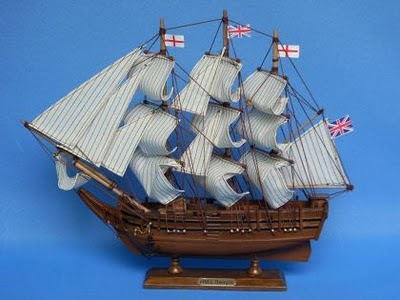
 land and sea gradually changed, then Darwin wondered whether the same thing happened to animals and plants? His visit to the Galapágos Islands in the Pacific Ocean was especially important. Darwin saw how animals were very similar from one island to the next, yet slightly different. He imagined how giant tortoises, mockingbirds and finches gradually changed or evolved due to the slightly different food and other living conditions on each island.
land and sea gradually changed, then Darwin wondered whether the same thing happened to animals and plants? His visit to the Galapágos Islands in the Pacific Ocean was especially important. Darwin saw how animals were very similar from one island to the next, yet slightly different. He imagined how giant tortoises, mockingbirds and finches gradually changed or evolved due to the slightly different food and other living conditions on each island. babies. Darwin began to suffer long illnesses, perhaps due to a disease caught in South America. In 1858 he received a letter from Alfred Russel Wallace, a naturalist travelling in Malaysia. Wallace described ideas on evolution very similar to Darwin’s own. Darwin was persuaded to give a talk on the topic in London, to the Linnean Society, and to finish his own book. This he did in 1859. On the Origin of Species by Means of Natural Selection sold out on its first day, and has been a best-seller ever since.
babies. Darwin began to suffer long illnesses, perhaps due to a disease caught in South America. In 1858 he received a letter from Alfred Russel Wallace, a naturalist travelling in Malaysia. Wallace described ideas on evolution very similar to Darwin’s own. Darwin was persuaded to give a talk on the topic in London, to the Linnean Society, and to finish his own book. This he did in 1859. On the Origin of Species by Means of Natural Selection sold out on its first day, and has been a best-seller ever since.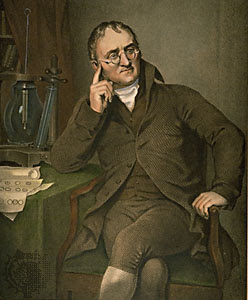 field, in Cumberland (now Cumbria). His parents belonged to the fundamentalist Christian movement known as the Quakers and he was educated at the Quaker village school. Young John was so good at his studies that when he was 12 he became a teacher there. In 1781 he became a teaching assistant at the Quaker school in Kendal, and four years later became joint principal with his brother. While there he came under the influence of the wealthy, blind scientist John Gough, who taught him mathematics, meteorology and botany.
field, in Cumberland (now Cumbria). His parents belonged to the fundamentalist Christian movement known as the Quakers and he was educated at the Quaker village school. Young John was so good at his studies that when he was 12 he became a teacher there. In 1781 he became a teaching assistant at the Quaker school in Kendal, and four years later became joint principal with his brother. While there he came under the influence of the wealthy, blind scientist John Gough, who taught him mathematics, meteorology and botany. In 1803, Dalton suggested that the tiniest particles of a chemical element are atoms of that element. This had been suspected by many thinkers since the time of the Ancient Greeks, but Dalton was the first to use science to show that it could be true. He realized that atoms of different chemical elements join together in fixed numbers based on their weights to make chemical compounds. This achievement was known as his atomic theory.
In 1803, Dalton suggested that the tiniest particles of a chemical element are atoms of that element. This had been suspected by many thinkers since the time of the Ancient Greeks, but Dalton was the first to use science to show that it could be true. He realized that atoms of different chemical elements join together in fixed numbers based on their weights to make chemical compounds. This achievement was known as his atomic theory. first scientist to understand that chemical elements could be classified according to their atomic weights. He realized the importance of atomic weights after studying how gases dissolved in water. He concluded that their mixing depended on the weight of the individual atoms of the gases. He devised a system of chemical symbols and formulae and drew up a table of the atomic weights of all the elements then known.
first scientist to understand that chemical elements could be classified according to their atomic weights. He realized the importance of atomic weights after studying how gases dissolved in water. He concluded that their mixing depended on the weight of the individual atoms of the gases. He devised a system of chemical symbols and formulae and drew up a table of the atomic weights of all the elements then known.
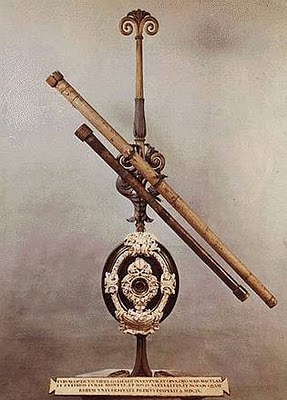

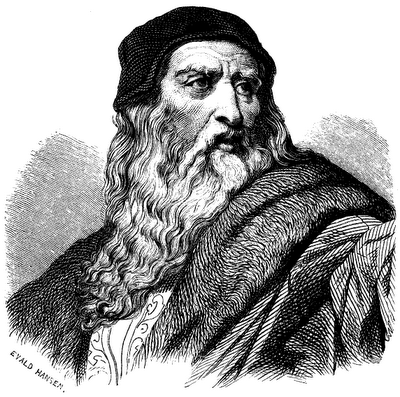 Leonardo da Vinci is one of the greatest artists who has ever lived. He is also among the greatest scientists. He experimented with unusual ways to mix paint and use colours. He created new painting techniques and original ways to compose pictures. He studied everything he saw—from living things to machines, using his incredible drawing skills to record them in detail. Then he used his observations to think up plans for inventions that were not built until hundreds of years later, such as a telescope, a tank and a helicopter!
Leonardo da Vinci is one of the greatest artists who has ever lived. He is also among the greatest scientists. He experimented with unusual ways to mix paint and use colours. He created new painting techniques and original ways to compose pictures. He studied everything he saw—from living things to machines, using his incredible drawing skills to record them in detail. Then he used his observations to think up plans for inventions that were not built until hundreds of years later, such as a telescope, a tank and a helicopter!
 irection of a river and also building canals, but these were not carried out.
irection of a river and also building canals, but these were not carried out. Whenever you turn on a light, listen to a CD or watch the television, you will probably not think about it, but you are doing something that owes a great deal to the life and work of the English scientist Michael Faraday.
Whenever you turn on a light, listen to a CD or watch the television, you will probably not think about it, but you are doing something that owes a great deal to the life and work of the English scientist Michael Faraday. e a magnetic field, but Faraday now discovered that a magnetic field could be used to create an electric current. This was known as “electromagnetic induction”. He showed it by moving coils of copper wire inside a magnetic field, causing an electric current to flow in the wire. The discovery helped him to create the world’s first electric dynamo—a machine that converts mechanical energy into electrical energy.
e a magnetic field, but Faraday now discovered that a magnetic field could be used to create an electric current. This was known as “electromagnetic induction”. He showed it by moving coils of copper wire inside a magnetic field, causing an electric current to flow in the wire. The discovery helped him to create the world’s first electric dynamo—a machine that converts mechanical energy into electrical energy. for the British government. From 1830 until 1851 he was professor of chemistry at the Royal Military Academy, Woolwich. There he worked on improving explosives. Between 1836 and 1865 he was scientific adviser to Trinity House, which meant that he oversaw the programme to electrify all the lighthouses around the British Isles. The government was very pleased with Faraday’s work and granted him a generous pension, although he refused the offer of a knighthood.
for the British government. From 1830 until 1851 he was professor of chemistry at the Royal Military Academy, Woolwich. There he worked on improving explosives. Between 1836 and 1865 he was scientific adviser to Trinity House, which meant that he oversaw the programme to electrify all the lighthouses around the British Isles. The government was very pleased with Faraday’s work and granted him a generous pension, although he refused the offer of a knighthood.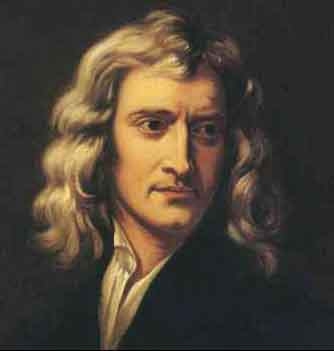 a few months before Isaac was born. When Isaac was two years old, his mother Hannah married again. Isaac was brought up at Woolsthorpe by his grandmother. He did not like his mother’s remarriage and hated his stepfather, the Reverend Barnabus Smith.
a few months before Isaac was born. When Isaac was two years old, his mother Hannah married again. Isaac was brought up at Woolsthorpe by his grandmother. He did not like his mother’s remarriage and hated his stepfather, the Reverend Barnabus Smith. Newton’s work on mathematics involved him in another argument. During the year he spent at home because of the plague, he had started to work on the mathematics of things that change. We now call this branch of mathematics calculus. Another famous scientist, Gottfried Leibniz, had come up with the same ideas a little later than Newton. They argued about who invented calculus first. The argument lasted until Leibniz died in 1716, and even after that.
Newton’s work on mathematics involved him in another argument. During the year he spent at home because of the plague, he had started to work on the mathematics of things that change. We now call this branch of mathematics calculus. Another famous scientist, Gottfried Leibniz, had come up with the same ideas a little later than Newton. They argued about who invented calculus first. The argument lasted until Leibniz died in 1716, and even after that.